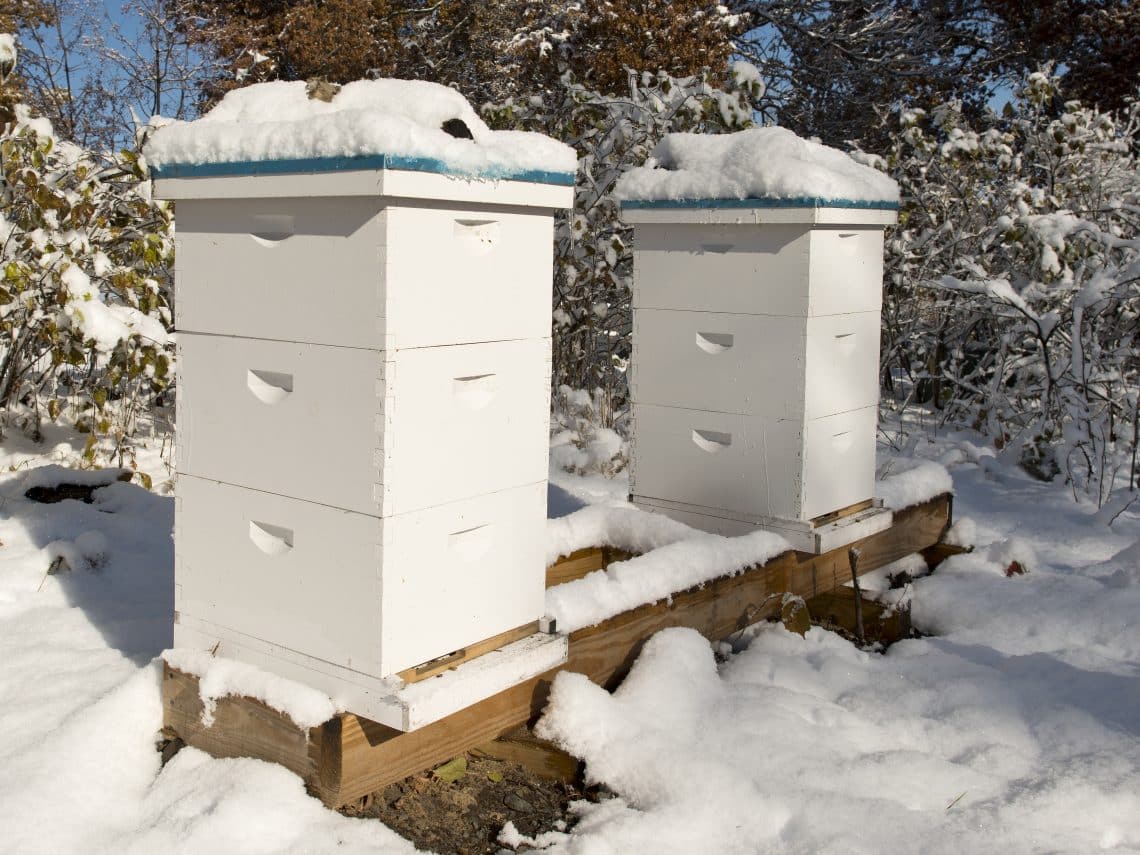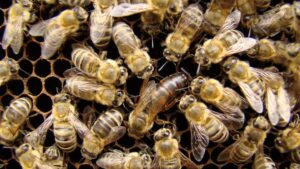Ensuring healthy hives for the winter season ahead isn’t just the responsibility of beekeepers. Farmers and landowners have a role to play, too.
With colder temperatures on the way, it’s important to think about the preparations needed to keep hives safe and healthy for the hard winter season.
Zac Browning, owner of Browning’s Honey Company in Jamestown, N.D., says the biggest key to managing winter hive loss is to have a large, healthy population of bees heading into the harsh weather.
“If we have a big, strong colony that is relatively mite free and healthy going into winter, it has a very good chance of surviving even harsh winters in North Dakota,” Browning says.
The majority of hive loss occurs over the winter, according to the U.S. Department of Agriculture (USDA), but there are still things that can be done to help.
“A 15 percent loss is considered acceptable by beekeepers for hives over the winter,” says Caydee Savinelli, pollinator and integrated pest management stewardship lead at Syngenta.
She says the United States has recently seen winter losses above that 15 percent goal, largely because of Varroa mite populations.
“Each year is different, but it’s been awhile since we’ve seen losses of only 15 percent,” she says.
Most recently, according to the USDA, honeybee operations with more than five hives saw losses of 17 percent for the three months between October and December 2016.
Annually, Browning says losses for the United States are close to one-third. Of course, new hives are being added each year as well to help make up for those losses.
“In the last 10 years or so, the annual mortality rate nationwide has been near the mid-thirties, but our operation does not lose more than 12-15 percent each year, and I attribute that success to Varroa mite treatment,” he says.
Mite Management
While there are multiple ways to combat mites, both organically and conventionally, Browning says most commercial hives rely on chemical treatments that are very specifically applied.
“Essentially, you’re trying to kill a bug on a bug, which is difficult to do. The products we use can technically harm bees if used incorrectly, but we apply it at a low enough dosage so that only the mites are affected,” Browning says.
If left untreated, the mite population increases to a level that can overwhelm the hive, bringing in diseases that weaken the bees, so they aren’t able to withstand the winter temperatures as well as they should be able to.
Savinelli agrees mite treatment is critical. “Overwintering is considered more problematic in northern states because of colder temperatures and harsher conditions. However, in Canada, they have recently had lower overwintering losses, which might be attributed to Varroa mite control, she says.
Inside the Hive
Bees don’t hibernate or go dormant in winter. Amazingly, bees keep the center-most part of their hive at 96 degrees Fahrenheit by clustering together and rotating positions slowly to ensure bees on the outside of the huddle also have a chance to move to the inside.
“They naturally rotate positions as they conservatively feed on their reserves,” Browning says.
Using this method, Browning says healthy populations can even survive week-long blizzards, if they have adequate windbreak and insulation around the hive, enough food storages and enough healthy bees —made more possible if the habitat they live in is thriving.
“If hives enjoy normal precipitation and normal temperatures in the summer, they will generally produce what we consider to be a sustainable amount of nutrition to last them through the winter,” Browning says. “However, the importance of nutrition goes deeper than just food storage. Honeybee hives actually brood specific bees to last through the winter.
“The last few cycles of brood receive additional nutrients, when developing, to make them fatter and hardier. They are designed to live up to six months through the winter, whereas bees that are brooded earlier in the summer are only bred to last six weeks.”
If there isn’t enough nutrition available in the late summer and fall for those broods to develop properly, the bees simply won’t live long enough to make it through the winter, even if all other precautions are taken.
“Otherwise, we end up with summer bees heading into the winter. It just won’t work,” Browning says. “That’s why habitat creation and maintenance is critical.”
Habitat Help
Savinelli says pollinator habitat programs help ensure farmers and beekeepers are able to work together so that the bees have an adequate food source prior to overwintering.
“We try to partner farmers with local beekeepers, to help them communicate and understand the issues each is dealing with. Programs such as Operation Pollinator and The Bee and Butterfly Habitat Fund encourage farmers to create habitats that help ensure honeybees are well-prepared to survive the winter,” Savinelli says.
“Those habitats help provide bees the proper nutrition they need to build up winter food storage and ensure healthy bees leading up to the stressful cold temperatures,” she says.
It takes some pre-planning, sometimes more than a year ahead of the next winter season, but farmers can help with winter preparations, in the long run, by preparing ground for a habitat that will feed the bees in their area during the next summer season. Working with efforts such as Operation Pollinator can ensure proper fall site preparation.
Other Efforts
Heading into the winter, beekeepers must take stock of the amount of honey each hive has.
“We want our hives to weigh over 100 pounds, which gives the bees around 65 pounds of honey — enough to feed them from the end of October to the first part of February,” Browning says.
Food can be added, if necessary, and the bees will store it, but only if it’s done early enough.
Other steps include ensuring the hive is a tight structure with limited entrance space and adequate insulation.
“We might add layers of insulation for a northern climate,” Browning says.
As winter approaches, there is one thing farmers can do — provide a windbreak for any hives on their land. Fall is certainly not the time to clean out fencerows that are providing shelter to hives.
Another important step is to simply leave the hives alone.
“In the north, opening a hive in the middle of winter is pretty much a death sentence,” he says.
Preparations need to be completed by the end of October.
“If you’re going to add feed or insulation to a hive, it needs to be done before the ambient temperature outside stays below 40 degrees for a few days in a row, because that will signal the bees to cease brood rearing and begin clustering,” Browning says.
Savinelli says winter preparations bridge the gap between farmers and beekeepers.
“They really have this effort in common. When farmers are finished with harvest, they have a winterization process to ensure their equipment and land is prepared for the winter. It’s the same for the beekeepers.,” she says.











